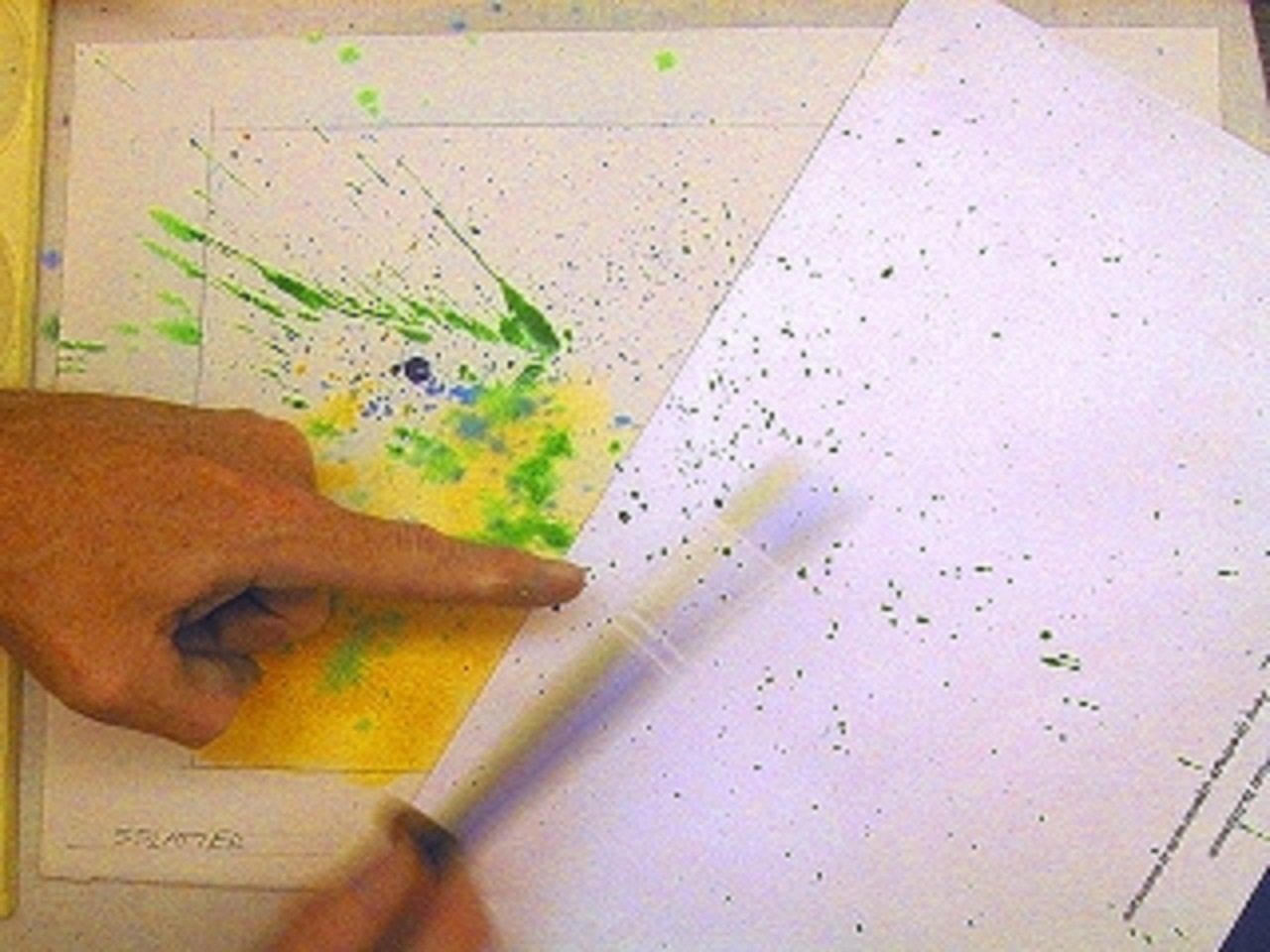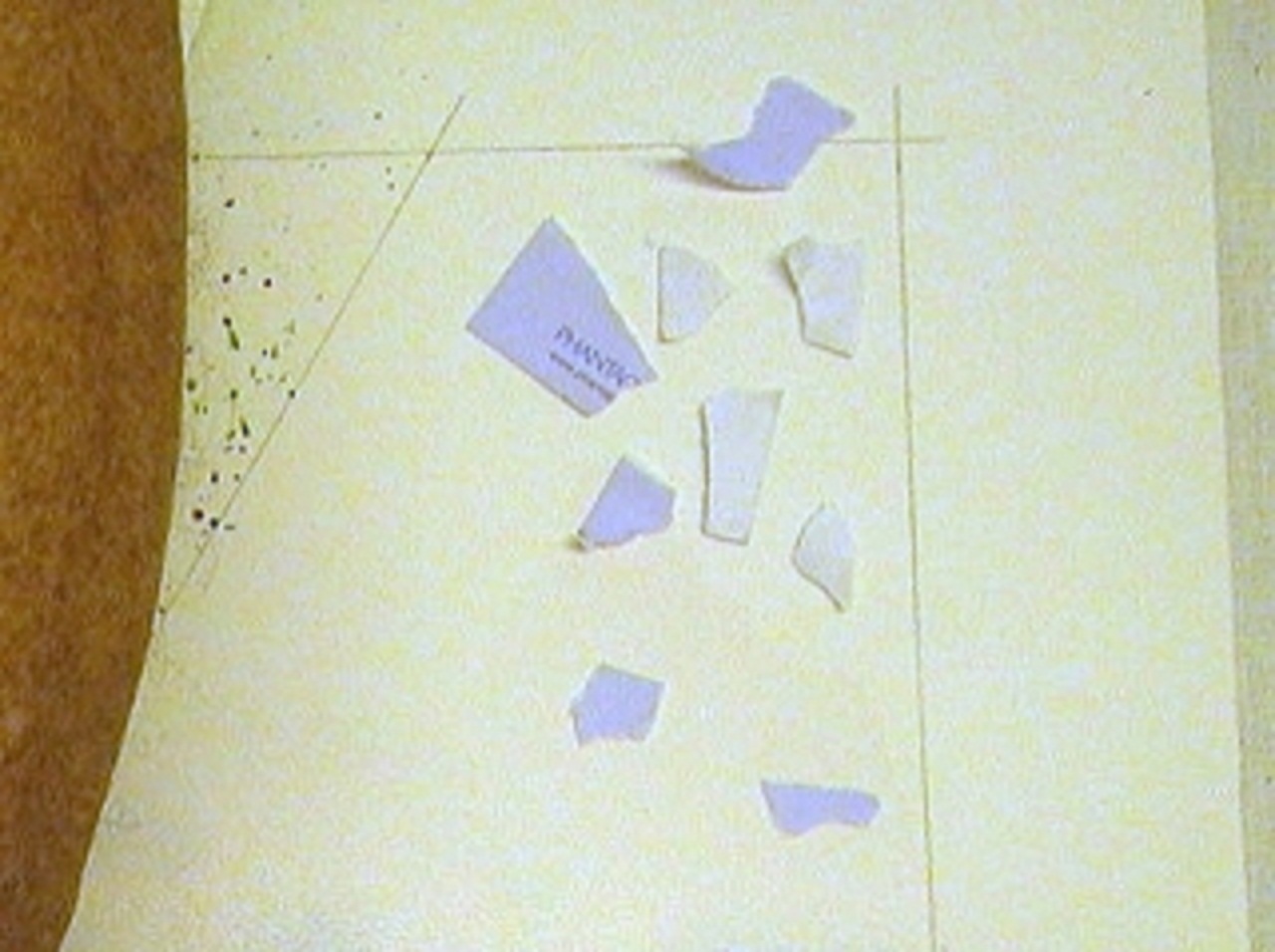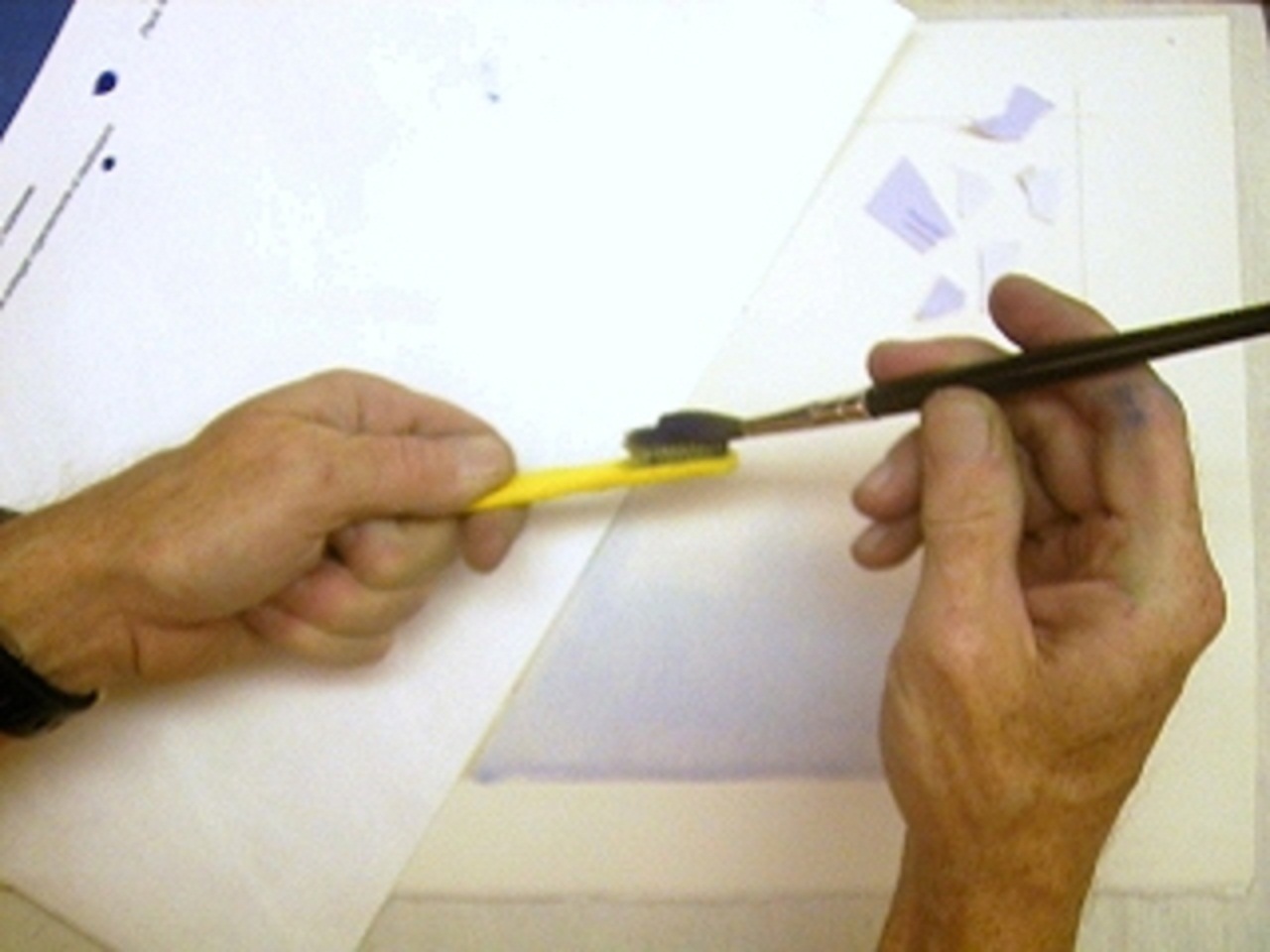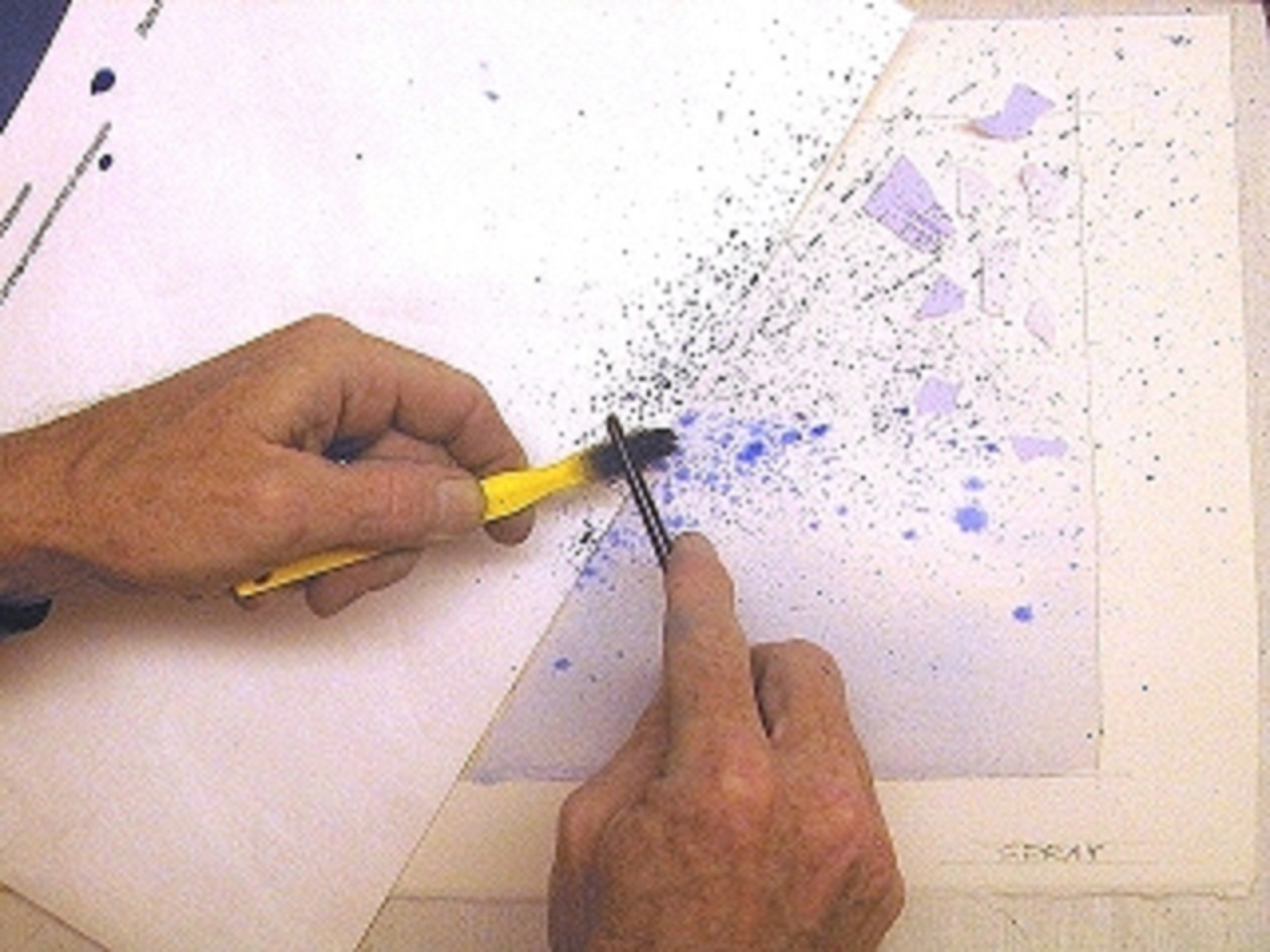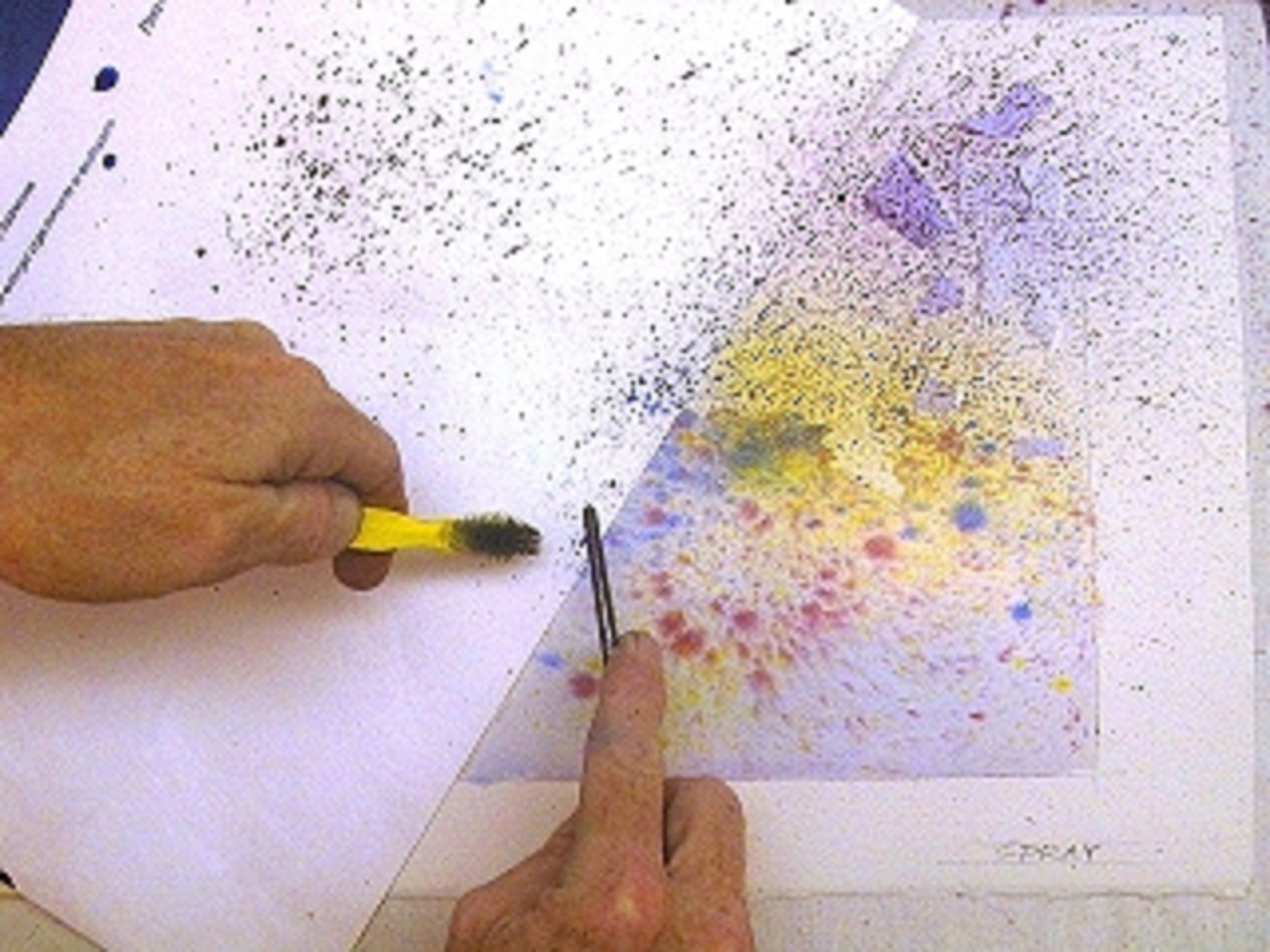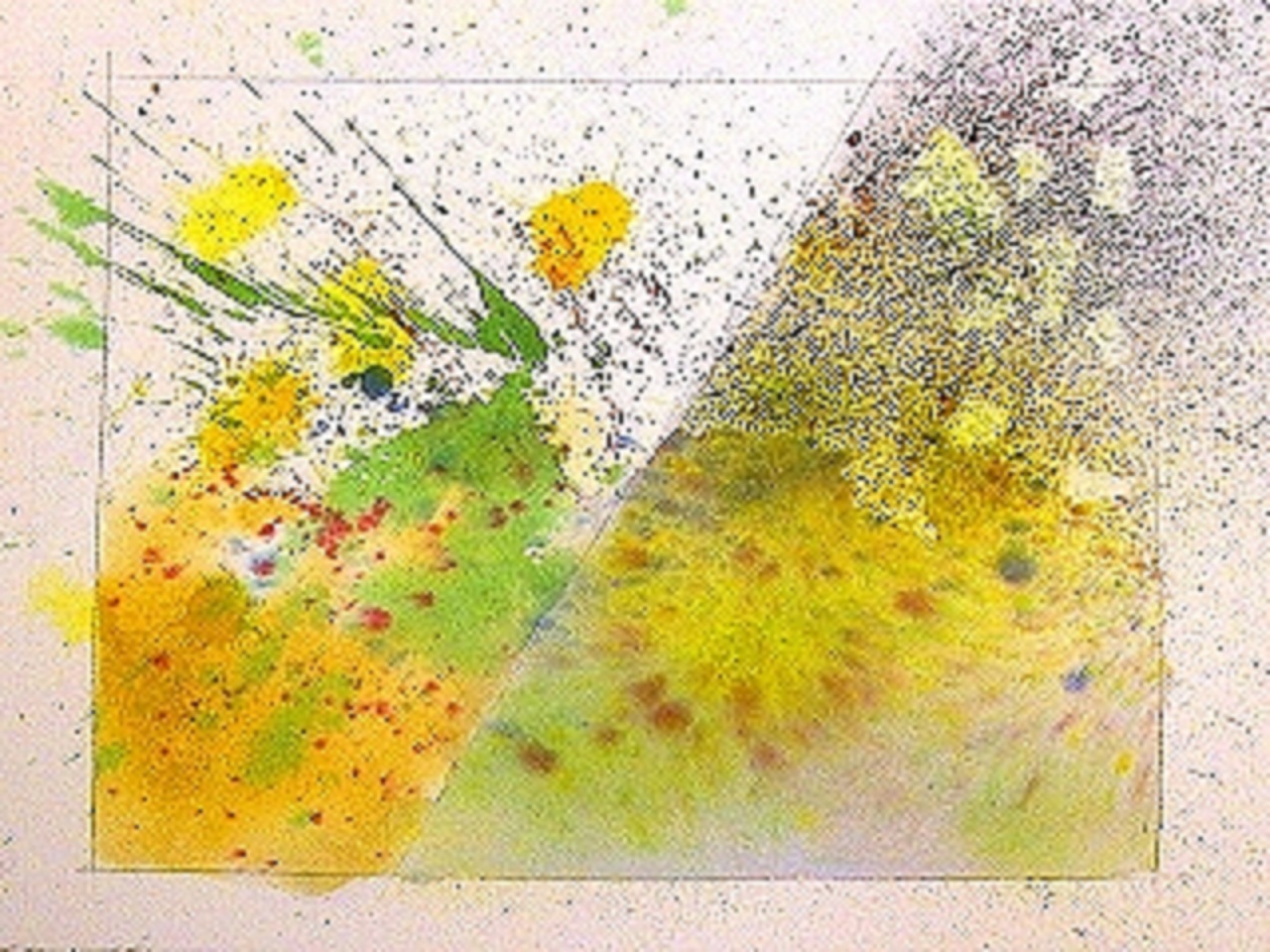Flinging paint is a fun watercolor technique!
I moistened the lower half of the paper to see what happens wet-in-wet as well as dry. Exciting effects require some exciting motions. Starting with some Cadmium Yellow Medium a 1½" wide wash brush, I stabbed some color into the lower wash rather sloppily. 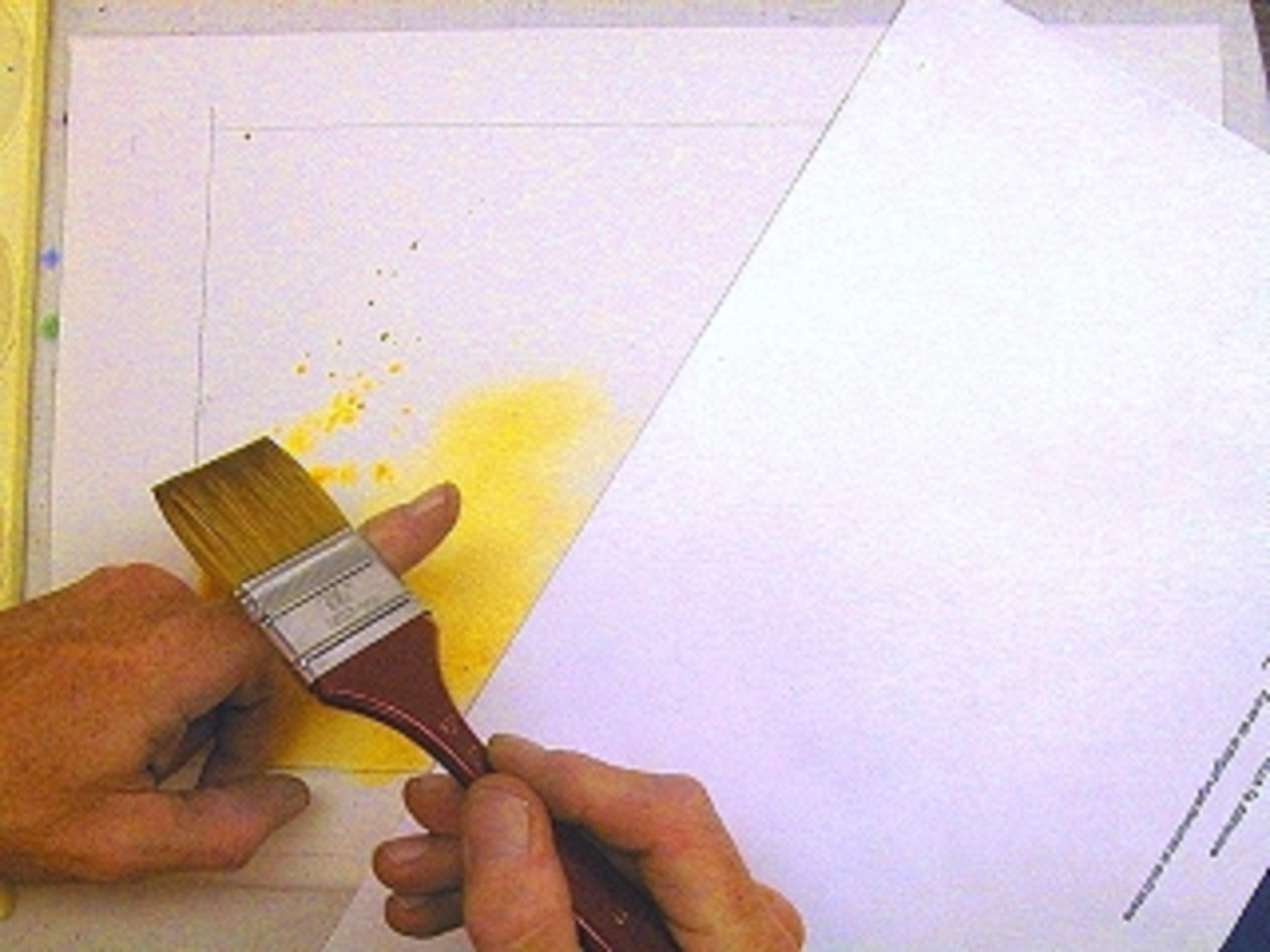 Grabbing some Yellow Ochre, with a quick mix I started rapping the edge of the brush against my finger. The paint appears to fly off chaotically.
Grabbing some Yellow Ochre, with a quick mix I started rapping the edge of the brush against my finger. The paint appears to fly off chaotically.
Throwing paint willy-nilly
Switching from a #8 and #4 red sable I ran through Ultramarine Blue, Sap Green, and Alizarin Crimson as I had a rather good time. If your brush is sopping wet you can't control much when you throw it. Big Splats. Shake a few drops out before you start for an illusion of control. I usually use my fingers when I rap the ferrule of the brush to release the paint for more of a tactile control. (If this technique hurts whatever part of your hands you are hitting, try rapping on a pen than has a padded rubberized grip.) I squeezed several drops of Cadmium Yellow Medium out of my round sable from a height of 3' to make big splats.
Spray it, don't say it
Before I started the spray example I tore up some small bits of paper and scattered them randomly in the upper corner. I also moistened the lower half of the example with clear water, and threw a light Dioxazine Purple wash into it. Look for a old toothbrush and clean and rinse the bristles thoroughly, removing any old residue. Prepare for a mess. It's a very messy watercolor technique.
It's like toothpaste for your muse
There are a couple ways to charge up a toothbrush. You can dip it directly in a paint puddle, but it is hard to fill the bristles evenly with paint. Here I charge the toothbrush from my #8 round brush. The advantage of doing it this way is that you can add as much paint as you need easily and in a controlled manner. You don't want the paint dripping from the toothbrush.
A simulated aerosol attack!
If you want to get "into the process" you can grip the toothbrush close to the head and drag your thumbnail back across the bristles. It does alter the effect in a unique way, but extra clean up is needed. Using the handle of a #5 round I started quickly raking across the bristles, releasing the paint in a spray. Pull straight back in a quick motion. Alter the speed of release and distance from the painting for variation.
Spraying mayhem continues - video at 11
I continue covering the example with all the same colors i used with the spalatter technique above. I thoroughly rinse the toothbrush and dry it on a towel before refilling with a new color. A modicum of control can be gained if you practice. Sometimes a modicum is all you need.
Evidence of effort
Click image to enlarge for details. Some watercolor purists consider these techniques gimmicks and believe only the brushstroke is suitable for traditional watercolor painting. They are wrong of course. Use whatever device, technique, tool or aesthetic you want as long as it helps you attain your own artistic vision.
